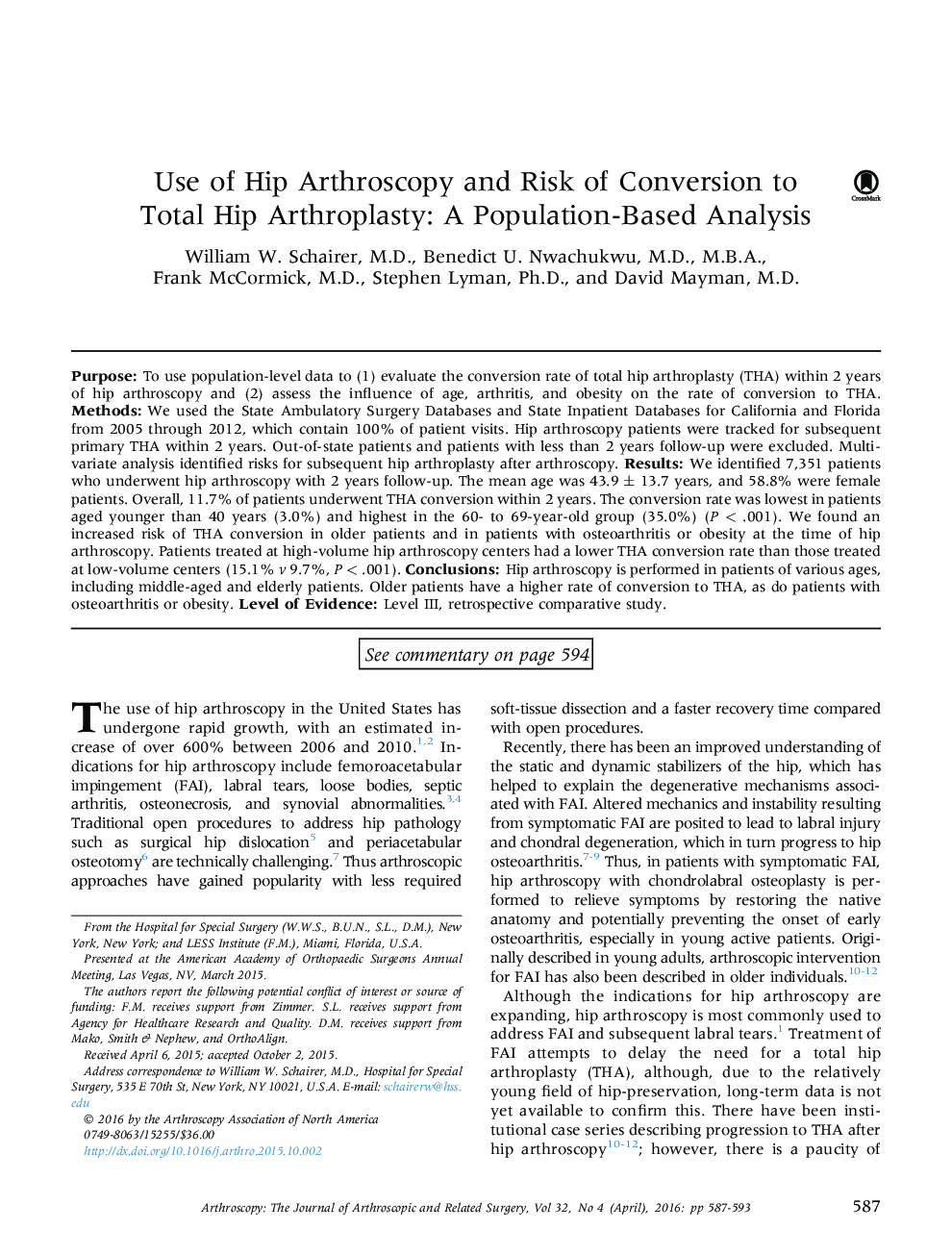| Article ID | Journal | Published Year | Pages | File Type |
|---|---|---|---|---|
| 4042166 | Arthroscopy: The Journal of Arthroscopic & Related Surgery | 2016 | 7 Pages |
PurposeTo use population-level data to (1) evaluate the conversion rate of total hip arthroplasty (THA) within 2 years of hip arthroscopy and (2) assess the influence of age, arthritis, and obesity on the rate of conversion to THA.MethodsWe used the State Ambulatory Surgery Databases and State Inpatient Databases for California and Florida from 2005 through 2012, which contain 100% of patient visits. Hip arthroscopy patients were tracked for subsequent primary THA within 2 years. Out-of-state patients and patients with less than 2 years follow-up were excluded. Multivariate analysis identified risks for subsequent hip arthroplasty after arthroscopy.ResultsWe identified 7,351 patients who underwent hip arthroscopy with 2 years follow-up. The mean age was 43.9 ± 13.7 years, and 58.8% were female patients. Overall, 11.7% of patients underwent THA conversion within 2 years. The conversion rate was lowest in patients aged younger than 40 years (3.0%) and highest in the 60- to 69-year-old group (35.0%) (P < .001). We found an increased risk of THA conversion in older patients and in patients with osteoarthritis or obesity at the time of hip arthroscopy. Patients treated at high-volume hip arthroscopy centers had a lower THA conversion rate than those treated at low-volume centers (15.1% v 9.7%, P < .001).ConclusionsHip arthroscopy is performed in patients of various ages, including middle-aged and elderly patients. Older patients have a higher rate of conversion to THA, as do patients with osteoarthritis or obesity.Level of EvidenceLevel III, retrospective comparative study.
